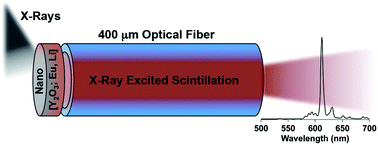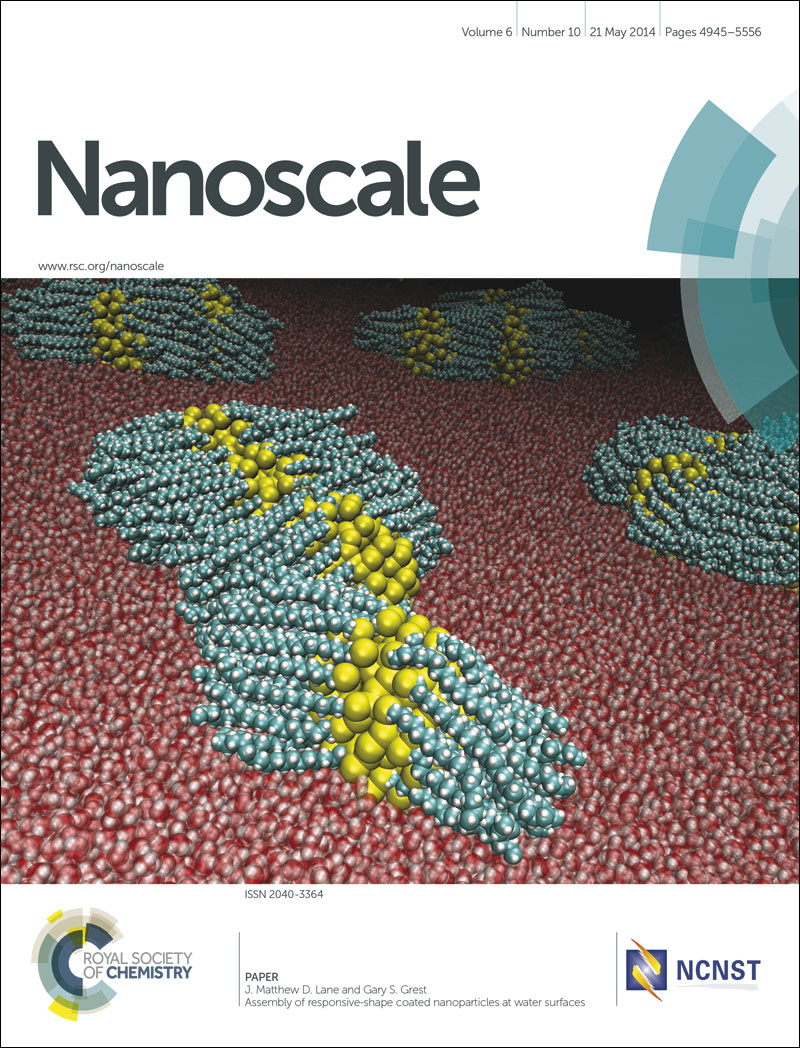Europium- and lithium-doped yttrium oxide nanocrystals that provide a linear emissive response with X-ray radiation exposure†
Abstract
Eu- and Li-doped yttrium oxide nanocrystals [Y2−xO3; Eux, Liy], in which Eu and Li dopant ion concentrations were systematically varied, were developed and characterized (TEM, XRD, Raman spectroscopic, UV-excited lifetime, and ICP-AES data) in order to define the most emissive compositions under specific X-ray excitation conditions. These optimized [Y2−xO3; Eux, Liy] compositions display scintillation responses that: (i) correlate linearly with incident radiation exposure at X-ray energies spanning from 40–220 kVp, and (ii) manifest no evidence of scintillation intensity saturation at the highest evaluated radiation exposures [up to 4 Roentgen per second]. For the most emissive nanoscale scintillator composition, [Y1.9O3; Eu0.1, Li0.16], excitation energies of 40, 120, and 220 kVp were chosen to probe the dependence of the integrated emission intensity upon X-ray exposure-rate in energy regimes having different mass-attenuation coefficients and where either the photoelectric or the Compton effect governs the scintillation mechanism. These experiments demonstrate for the first time for that for comparable radiation exposures, when the scintillation mechanism is governed by the photoelectric effect and a comparably larger mass-attenuation coefficient (120 kVp excitation), greater integrated emission intensities are recorded relative to excitation energies where the Compton effect regulates scintillation (220 kVp) in nanoscale [Y2−xO3; Eux] crystals. Nanoscale [Y1.9O3; Eu0.1, Li0.16] (70 ± 20 nm) was further exploited as a detector material in a prototype fiber-optic radiation sensor. The scintillation intensity from the [Y1.9O3; Eu0.1, Li0.16]-modified, 400 μm sized optical fiber tip, recorded using a CCD-photodetector and integrated over the 605–617 nm wavelength domain, was correlated with radiation exposure using a Precision XRAD 225Cx small-animal image guided radiation therapy (IGRT) system. For both 80 and 225 kVp energies, this radiotransparent device recorded scintillation intensities that tracked linearly with total radiation exposure, highlighting its capability to provide alternately accurate dosimetry measurements for both diagnostic imaging (80 kVp) and radiation therapy treatment (225 kVp).


 Please wait while we load your content...
Please wait while we load your content...